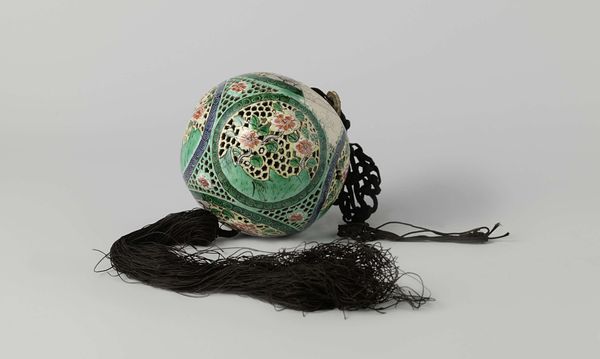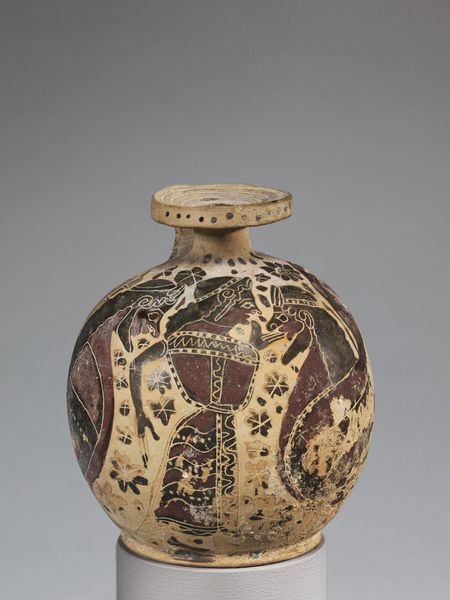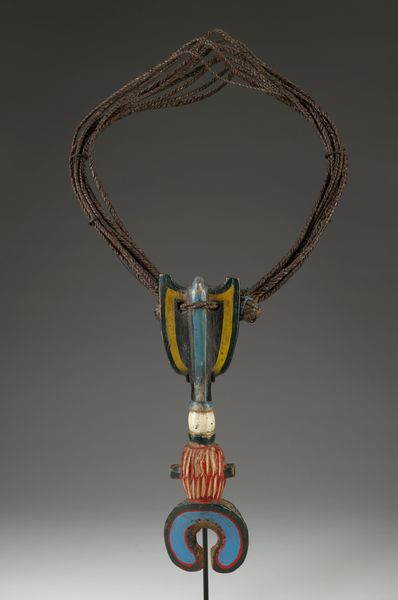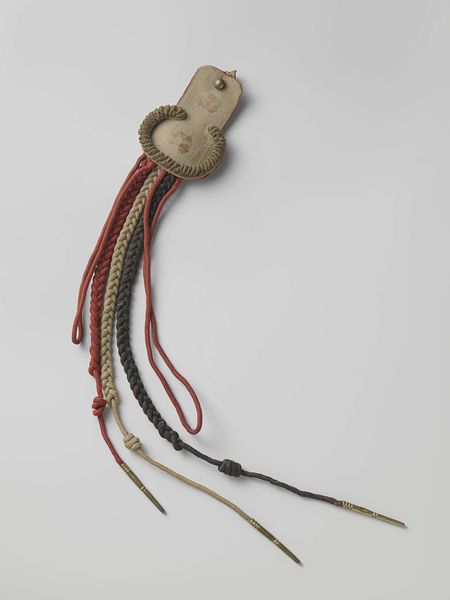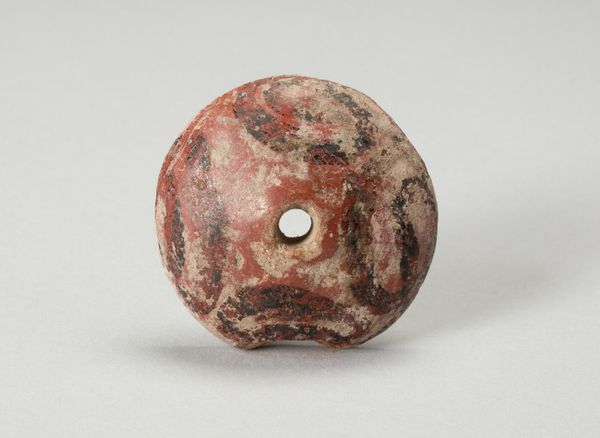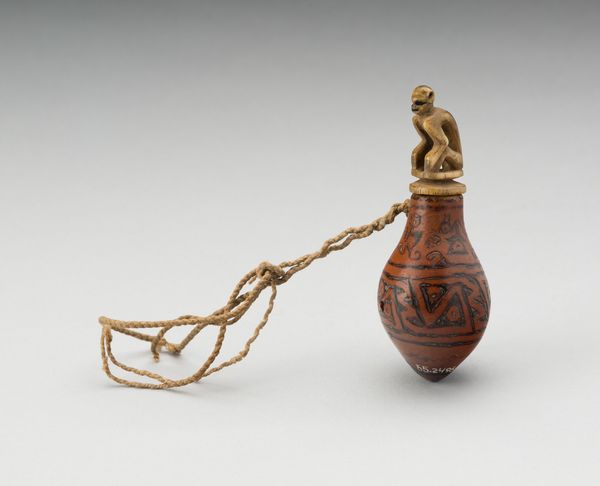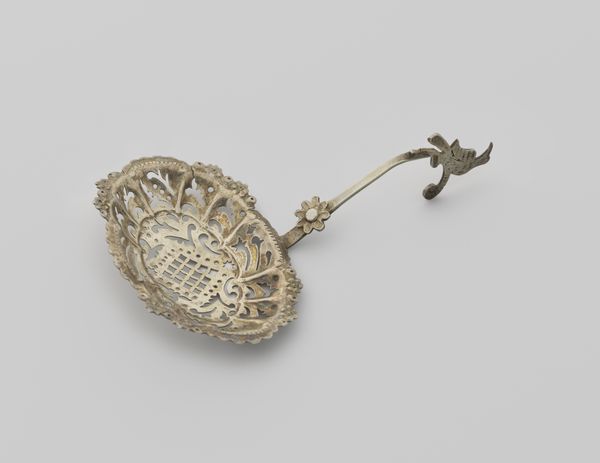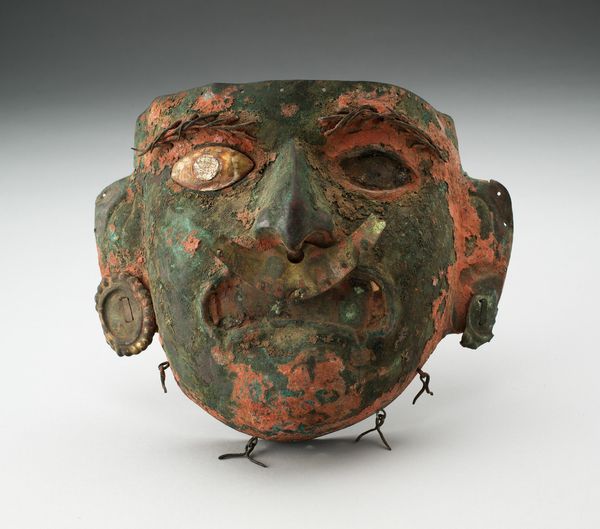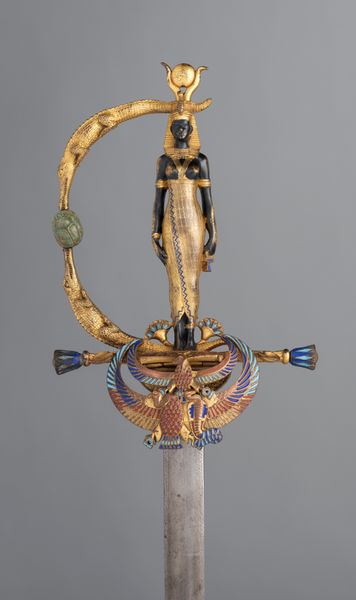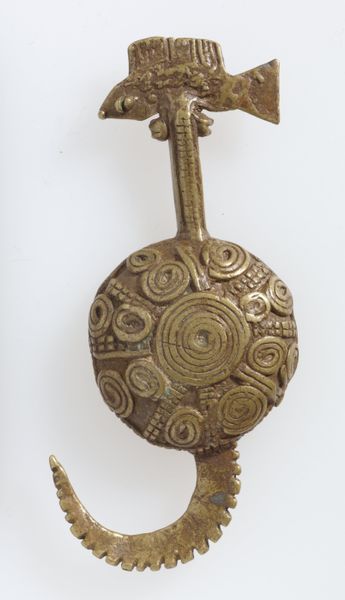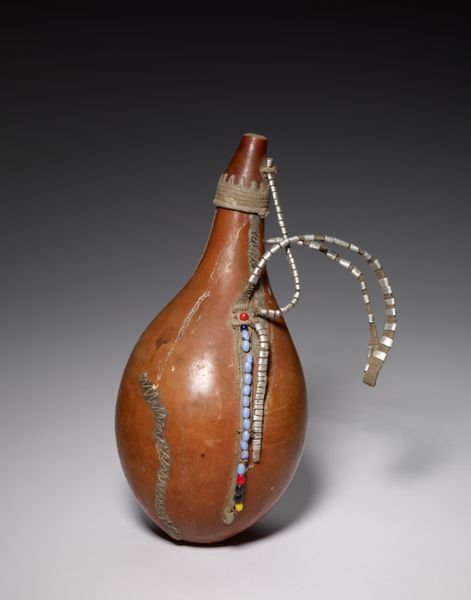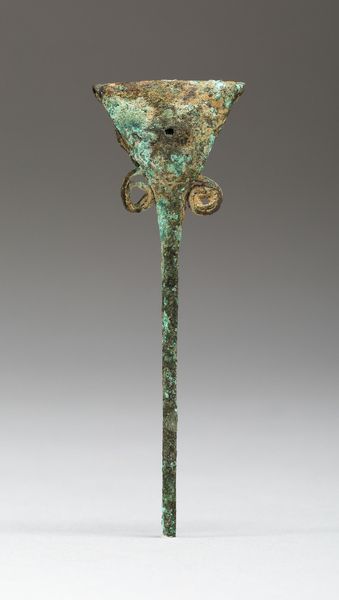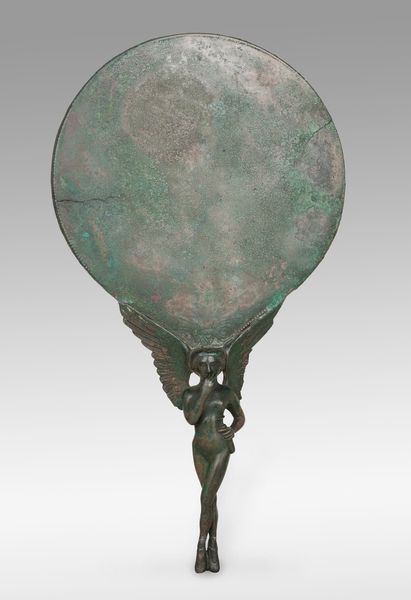
ceramic
#
3d sculpting
#
3d model
#
baroque
#
3d printed part
#
asian-art
#
ceramic
#
jewelry design
#
virtual 3d design
#
round design
#
sculptural image
#
curved arc
#
3d shape
#
3d modeling
#
decorative-art
Copyright: Rijks Museum: Open Domain
Curator: Here we have a pomander dating from around 1700 to 1724, currently held at the Rijksmuseum. It's crafted from ceramic in a style reminiscent of decorative art. Editor: At first glance, I am struck by its fragile opulence. The intricacy suggests both delicacy and wealth—like something suspended between adornment and power. Curator: Precisely. Its form, a sphere meticulously pierced with openwork, calls attention to the object's three-dimensionality. Note how the light interacts with the curved arcs and round design elements; the eye is constantly led on a circular journey. Editor: Considering the pomander's function—as a carrier of perfumes and spices—the craftsmanship transcends mere aesthetic value. The spices it held likely masked odors from poor sanitation. It becomes not just a decorative object but an emblem of status and, perhaps, survival in a less-than-pleasant world. Who had access to clean scents versus who didn't speaks volumes. Curator: The meticulous attention to detail indeed points to a certain societal stratum. What about the material? The ceramic medium, although commonly used, seems elevated by the complex carving technique and hints at Asian influences within European craftsmanship. This cross-cultural exchange adds another layer of interest to its physical presence. Editor: It forces us to ask questions about colonialism and global trade routes. The presence of "Asian-art" styles begs consideration as to whose artistry is being consumed and repurposed. Are we looking at an intentional integration or a forceful appropriation? I also think about who touched it, whose bodies and scents it traveled with—connecting it to the history of those silenced in conventional accounts. Curator: That's a good question. Though attributed to an anonymous artist, examining the inherent aesthetic value alongside form and composition enriches our understanding—how these intertwine is visually arresting, regardless of authorship or intention. Editor: True. And considering it today, the pomander challenges us to grapple with its multi-layered legacy—beauty, privilege, inequality, and history are all suspended within its delicate frame. Curator: A testament to the enduring power of material objects and our individual way of seeing it! Editor: Indeed.
Comments
No comments
Be the first to comment and join the conversation on the ultimate creative platform.
